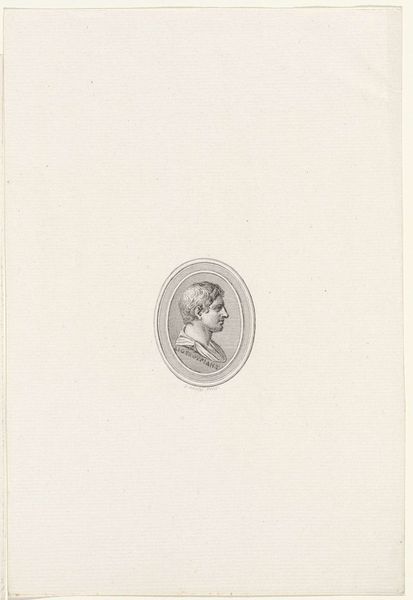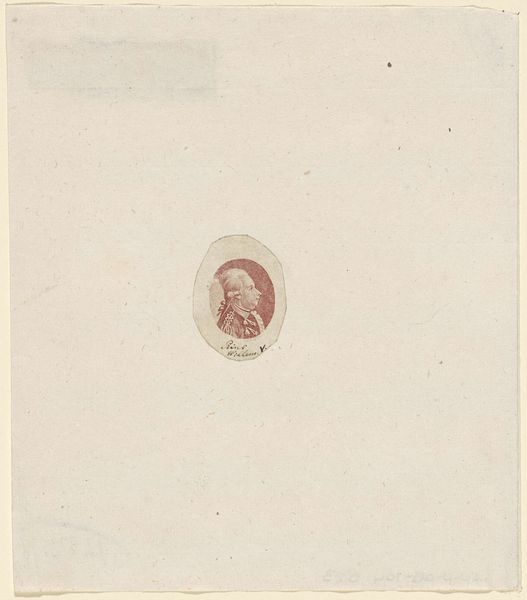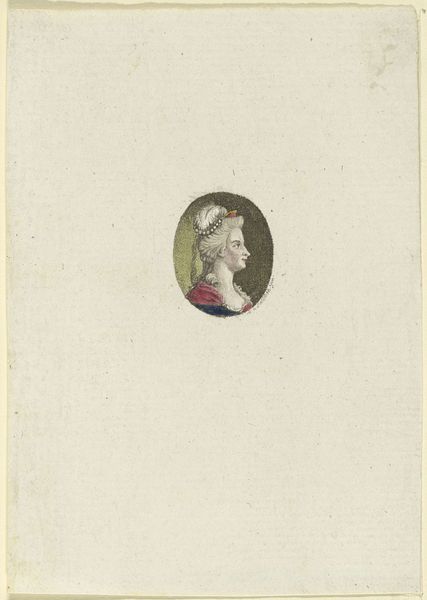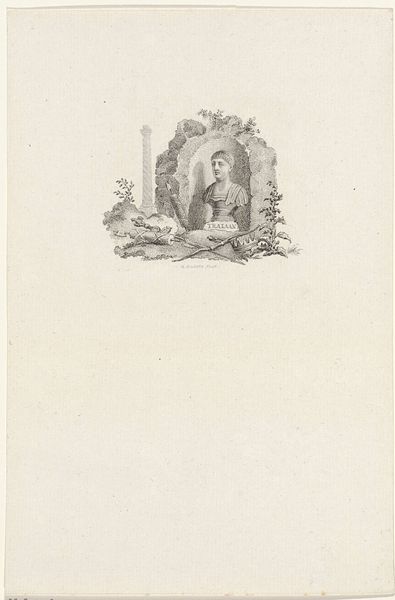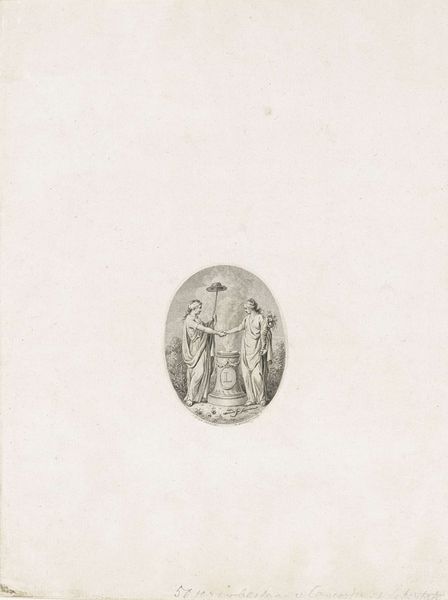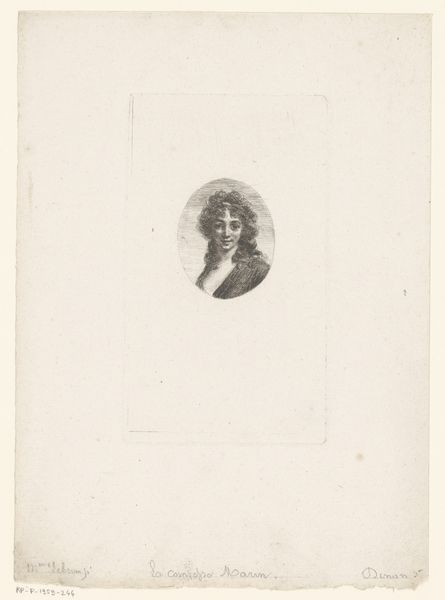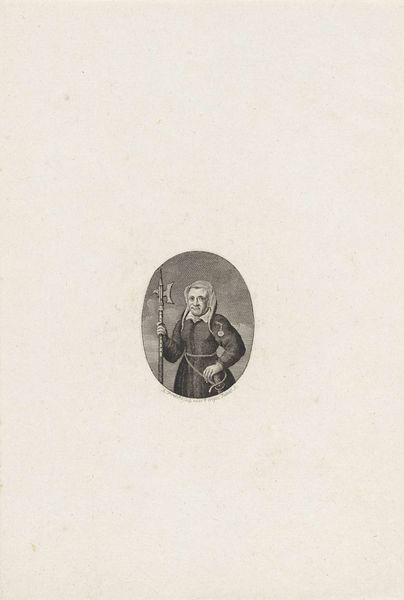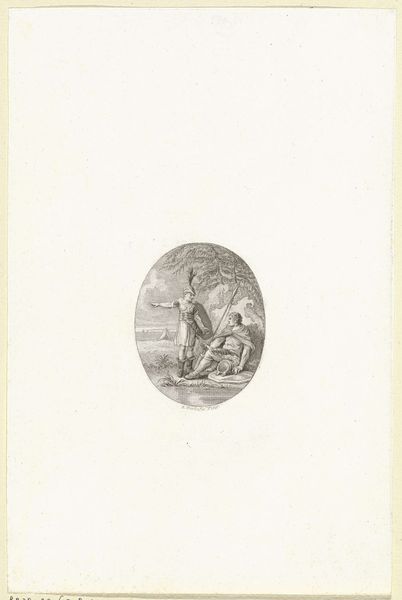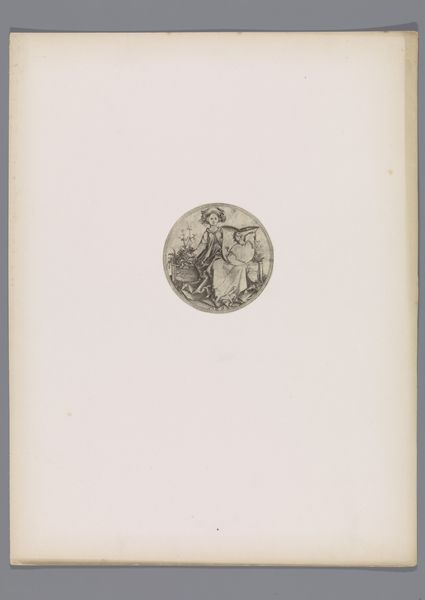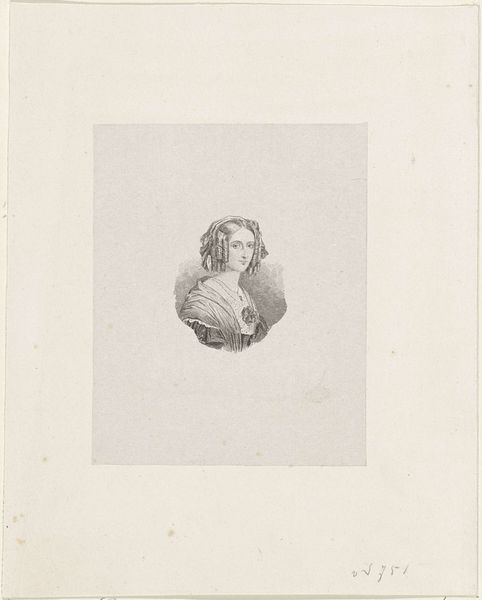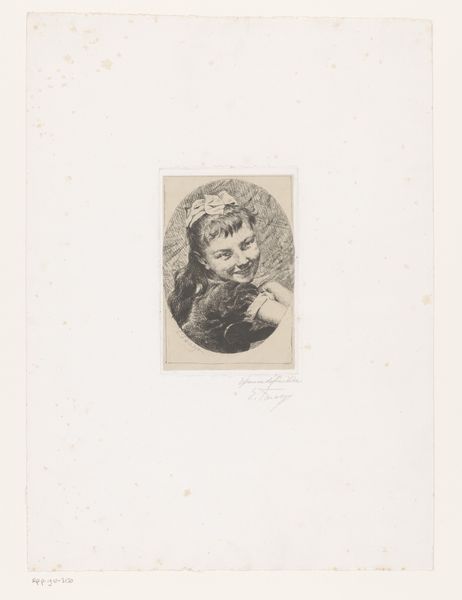
drawing, print, engraving
#
portrait
#
drawing
#
neoclacissism
# print
#
old engraving style
#
engraving
Dimensions: height 241 mm, width 161 mm
Copyright: Rijks Museum: Open Domain
Curator: This somber miniature, created around 1803, is entitled "Portret van Louise de Coligny," conceived by Reinier Vinkeles and now held at the Rijksmuseum. The engraving portrays Louise de Coligny, wife of William the Silent, a pivotal figure in Dutch history. Editor: It has a decidedly melancholic feel. The scale is so small, and the monochrome only amplifies that sense of something… lost, perhaps. I suppose that’s fitting considering Coligny's history, as it carries symbolic weight for many even today. Curator: Absolutely. Consider the conventions of portraiture at the time. This print adheres to the Neoclassical style with a restrained elegance, and yet Vinkeles imbued this diminutive engraving with profound dignity. There’s also the psychological dimension; oval portraits have specific iconographic meanings, such as virtue and morality. Editor: That small scale also reflects the constraints of dissemination during that period, as it also echoes memorial portraits passed among relatives or sympathizers. How was it received? What narratives were consciously shaped through its visual presence? Curator: As an accessible print, the portrait facilitated broader awareness of Coligny as an emblem of resilience against tyranny, fitting neatly into the broader politicization of historical narratives in the Batavian Republic, as it would then have been known. Editor: She becomes almost a cipher, carrying national ideals, but the artistic choices, such as using line engraving instead of a mezzotint or something else, suggest a specific public in mind, or is it possible the availability of printing tools or the engraver's background are the deciding factors for its materiality? Curator: Possibly a combination. But consider that line engraving allows for sharply defined details lending itself well to clarity, thus reinforcing the public’s grasp of Louise's allegorical role. She had already long passed by this point. There’s a didactic quality, as history should act for public understanding and the foundation for future societal strength. Editor: Fascinating, but what I really see is how a tiny, ostensibly straightforward image can unlock entire layers of cultural and political meanings from history itself. Curator: It shows how much the material is often an artifact in and of itself, offering another look through how art functions, like you stated, in the sphere of political and cultural movements.
Comments
No comments
Be the first to comment and join the conversation on the ultimate creative platform.

